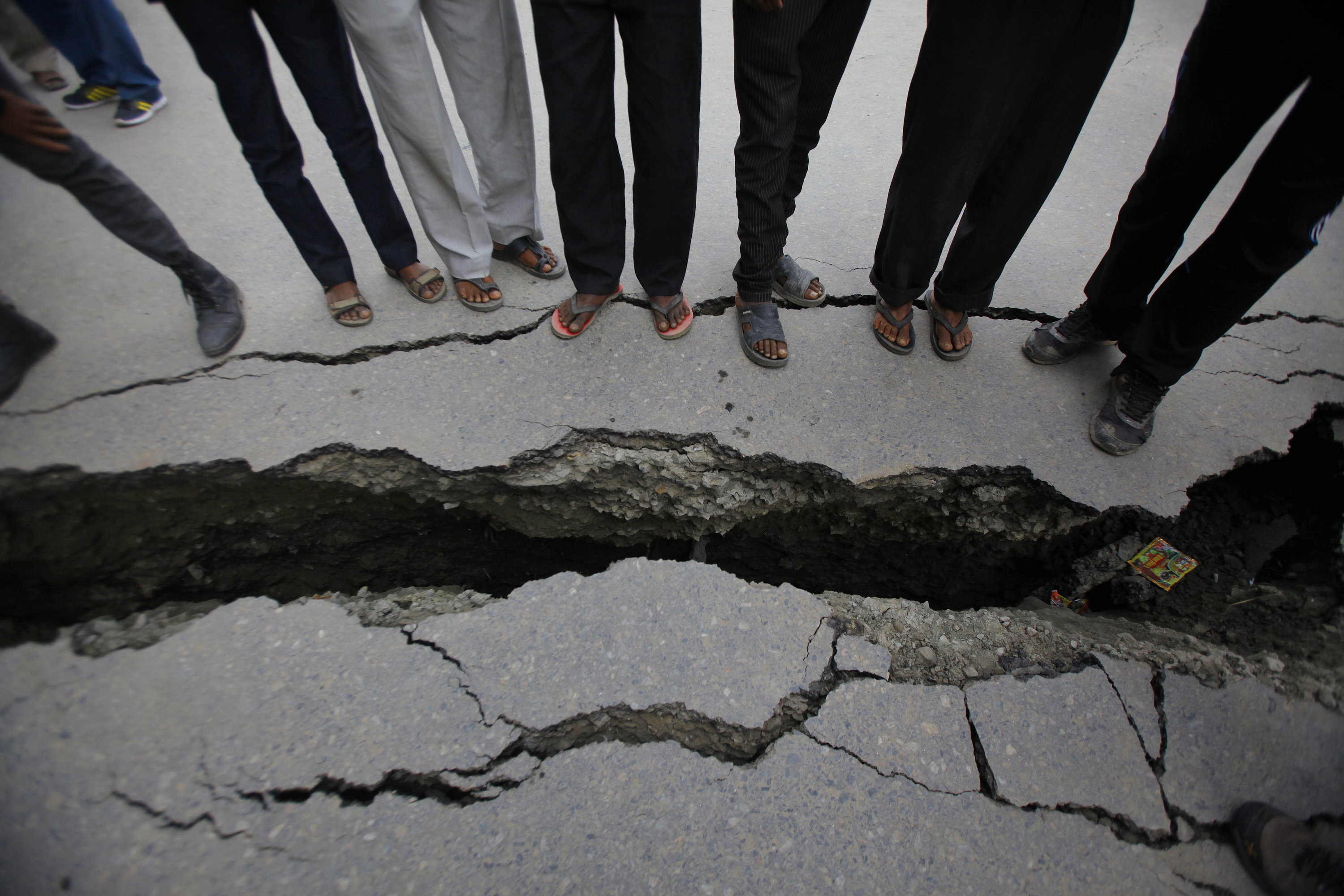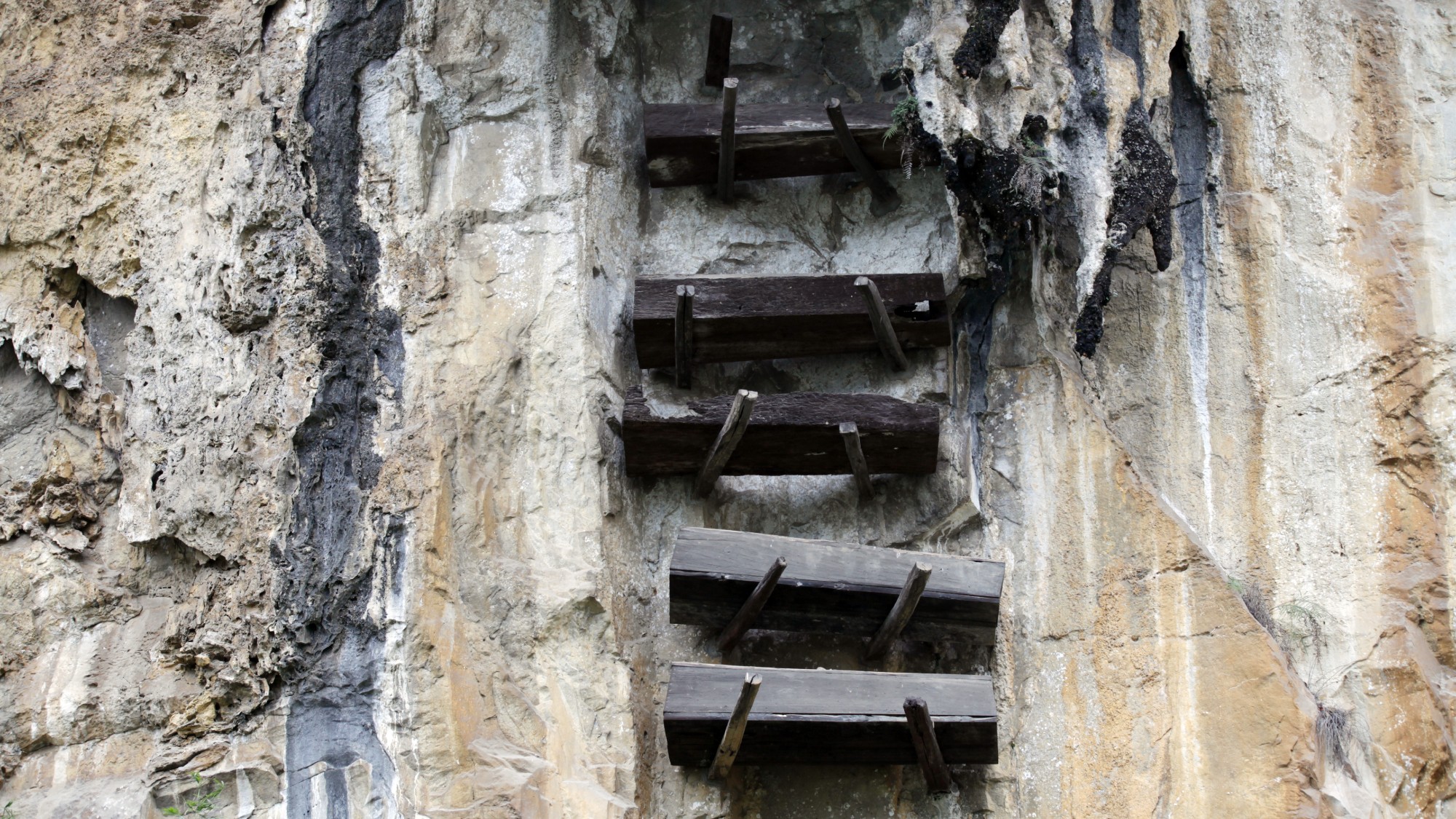How we're building a better earthquake warning system
Yeah, there's an app for that

The next big idea in earthquake preparedness may be crowdsourcing. There's even an app for it.
Researchers at UC Berkeley recently released MyShake, an app that transforms smartphones into earthquake detectors. Upon sensing shaking, the app determines whether it's an earthquake and, if so, relays information about its intensity, origin time, and location to the Berkeley Seismological Laboratory, where researchers analyze the data. Someday, researchers hope, the information will also boomerang out again — in less than a second — sounding an early warning to those who are located outside the quake's epicenter.
"This is a citizen science project," Richard Allen, director of the Berkeley Seismological Laboratory, told the Los Angeles Times. "This is an app that provides information, education, motivation — to the people who've downloaded it — to get ready for earthquakes. Those same people are contributing to our further understanding of earthquakes, because they're collecting data that will help us better understand the earthquake process."
The Week
Escape your echo chamber. Get the facts behind the news, plus analysis from multiple perspectives.

Sign up for The Week's Free Newsletters
From our morning news briefing to a weekly Good News Newsletter, get the best of The Week delivered directly to your inbox.
From our morning news briefing to a weekly Good News Newsletter, get the best of The Week delivered directly to your inbox.
The United States has lagged behind other countries in developing effective earthquake early warning systems. Mexico City has had one since 1991, and Japan since 2007. Istanbul, Romania, Italy, and Taiwan also have them. America's absence on that list is even more troubling when you consider that nearly half of all Americans live in areas that could be hit by an earthquake. The hotspots in danger of the worst quakes include such widespread locales as upstate New York, South Carolina, Missouri, and Wyoming, along with the entire West Coast.
The most notorious earthquake zone is California's San Andreas fault (it even has its own movie). But as Kathryn Schulz wrote in The New Yorker, a different fault line is poised to unleash a more powerful jolt than the San Andreas is capable of. Called the Cascadian subduction zone, it runs along the 700-mile stretch from Mendocino, California, to Vancouver Island, Canada. The odds of an 8.0 to 8.6 magnitude earthquake occurring there in the next 50 years are one in three. The odds of an 8.7 to 9.2 earthquake are one in 10. Keeping in mind that the Richter scale is logarithmic — each whole number jump is a tenfold increase — the damage could be devastating.
Thankfully, the MyShake app isn't the only sign of progress on the preparedness front. After a decade of development, the U.S. Geological Survey's ShakeAlert system has moved into its beta phase, a success heralded in February at the first White House Earthquake Resilience Summit. The system is tied to the California Integrated Seismic Network: 400 ground-motion sensors that detect the seismic waves radiating outward in all directions from an earthquake's epicenter. Specifically, the sensors register what are called P-waves, or compressional waves; these are the fastest waves and thus the first to arrive at any location, though they rarely do much damage. The later-arriving S-waves, or shear waves, cause the more violent, side-to-side shaking.
When ShakeAlert senses a wash of P-waves, it delivers a message to a central computer, which in turn relays a warning to a user's computer or mobile phone with the magnitude and location of the earthquake, as well as how much time remains before the S-waves arrive. So depending on where a person is located relative to the quake's epicenter, it could deliver a warning of a few seconds to around 30 seconds. (One successful test gave researchers in San Francisco eight seconds of warning before the shaking from a 6.0 earthquake from Napa arrived.)
A free daily email with the biggest news stories of the day – and the best features from TheWeek.com
A few seconds may not sound like a lot, but in an emergency, every second counts. And it's certainly enough time to take all sorts of steps to reduce casualties, injuries, and damages. Trains could halt, surgeons could step away from patients, elevators could stop on the nearest floor to discharge passengers, and people could seek cover.
Jennifer Strauss, chair of the education and training committee for ShakeAlert at Berkeley, said the system will be especially critical for dense urban communities that are far enough from epicenters to take advantage of a warning. "Those are the populations and the infrastructure that have the highest hazard and most costly impact," Strauss told CityLab.
Funding has been a significant hurdle in bringing ShakeAlert to the public at large; it's estimated that it will cost $38.3 million to roll out the system on the West Coast and another $16.1 million annually to keep it running. Only about half of the operating cost has been paid for by the federal government, according to the Los Angeles Times.
As for the MyShake app, though its makers say that it cannot replace traditional seismic networks like the one ShakeAlert relies on, they think it can improve the speed and accuracy of warnings in areas served by those networks. The app also could provide life-saving early warning in countries that have no seismic network. "That's the real power here. You go to places like Nepal where there were these big earthquakes earlier this year and there are very few seismic stations in that country. But there are six million smartphones," UC Berkeley's Allen told The Canadian Press.
The MyShake technology takes advantage of smartphones' inner-workings: three built-in accelerometers, designed to sense a phone's orientation for display or gaming. The accelerometers are sensitive enough to record earthquakes above a magnitude 5, within 10 kilometers. And thanks to an algorithm that relies on 20 unique characteristics of earthquake shakes, the app can distinguish them 93 percent of the time from typical vibrations such as walking or dropping the phone.
To attract users, researchers knew the app would have to be unobtrusive: "We never wanted it to use any more power than your phone uses when it's [hibernating,] and doing nothing," Allen told Popular Mechanics. "So, for any smartphone user that plugs in their phone to charge once per day, they won't even notice it's there."
And how many users does it need to be effective? "At least 300 smartphones within a 110-kilometer-by-110-kilometer area in order to have a reasonable estimate of the location, magnitude, and origin time of an earthquake," said Qingkai Kong, the UC Berkeley graduate student who developed the algorithm. "The denser the network, the earlier you can detect the earthquake."
MyShake is available as a free Android app and under a different name, MyQuake, for iOS.
Alexis Boncy is special projects editor for The Week and TheWeek.com. Previously she was the managing editor for the alumni magazine Columbia College Today. She has an M.F.A. from Columbia University's School of the Arts and a B.A. from the University of Virginia.
-
 The curious history of hanging coffins
The curious history of hanging coffinsUnder The Radar Ancient societies in southern China pegged coffins into high cliffsides in burial ritual linked to good fortune
-
 The Trump administration says it deports dangerous criminals. ICE data tells a different story.
The Trump administration says it deports dangerous criminals. ICE data tells a different story.IN THE SPOTLIGHT Arrest data points to an inconvenient truth for the White House’s ongoing deportation agenda
-
 Ex-FBI agents sue Patel over protest firing
Ex-FBI agents sue Patel over protest firingspeed read The former FBI agents were fired for kneeling during a 2020 racial justice protest for ‘apolitical tactical reasons’